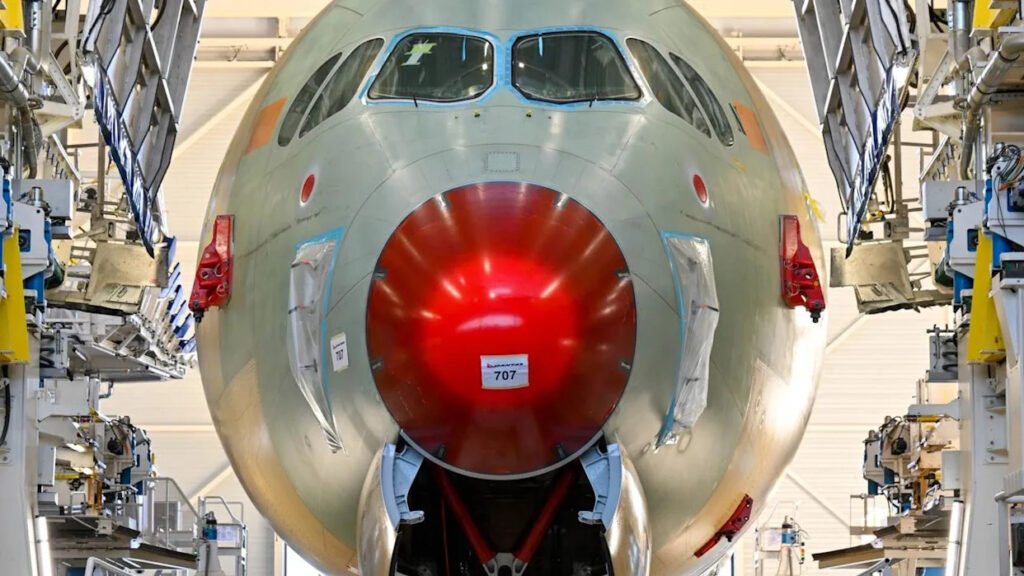
The first of Qantas’ new aircraft designed for non-stop flights from Australia to London and New York is currently on the assembly line at Airbus’ facility in Toulouse. This significant development marks a pivotal moment in the airline’s ambitious plans to operate the longest commercial flights in the world.
Images shared by Qantas and Airbus reveal the A350-1000ULR (Ultra Long Range) aircraft after completing major production phases. All essential airframe components, which include the forward, centre, and rear fuselage sections, have been joined together. The wings, tail sections, and landing gear are now attached, and the aircraft will soon move to a different hangar for the installation of engines and flight test instruments. An extensive test flight program is scheduled to commence in 2026.
The specially configured A350-1000ULR aircraft will be capable of flying non-stop for up to 22 hours. This feat is made possible by the addition of a 20,000-litre rear centre fuel tank and enhanced systems. Qantas expects that these direct services will reduce overall travel time by up to four hours compared to current one-stop routes.
Project Sunrise is the name given to this initiative, paying tribute to Qantas’ historic Double Sunrise flights during World War II, which allowed crew members to witness two sunrises in a single journey. Qantas Chief Executive Vanessa Hudson emphasized that the assembly of the aircraft is a step closer to making Project Sunrise a reality.
“Given Australia’s position in the world, Qantas has a long history of breaking aviation barriers,” Ms. Hudson stated. “Project Sunrise will not only overcome the tyranny of distance, it will fundamentally change the way our customers travel the world. These flights will cut up to four hours off the journey and transform how people experience ultra long-haul travel, through science-backed design to minimize jet lag and maximize wellbeing.”
The aircraft’s cabins are being developed from the ground up in collaboration with Australian industrial designer David Caon and specialists from the University of Sydney’s Charles Perkins Centre. Sleep scientists are contributing to features aimed at reducing jet lag, such as customized lighting and timed meal services.
Passenger comfort has been a top priority, with the aircraft configured to accommodate 238 seats, significantly fewer than the 300-plus seats typically found in other A350-1000 models. A uniquely designed “wellbeing zone” will exist between the premium economy and economy sections. This area will feature integrated stretch handles, guided exercise programs, a hydration station, and a selection of refreshments to enhance passenger experience.
The first of the twelve A350-1000ULR aircraft is scheduled for delivery in late 2026. The inaugural commercial flights under Project Sunrise are anticipated to begin in the first half of 2027. As Qantas prepares to redefine long-haul travel, the aviation industry will be watching closely to see how these advancements alter the landscape of international air travel.







